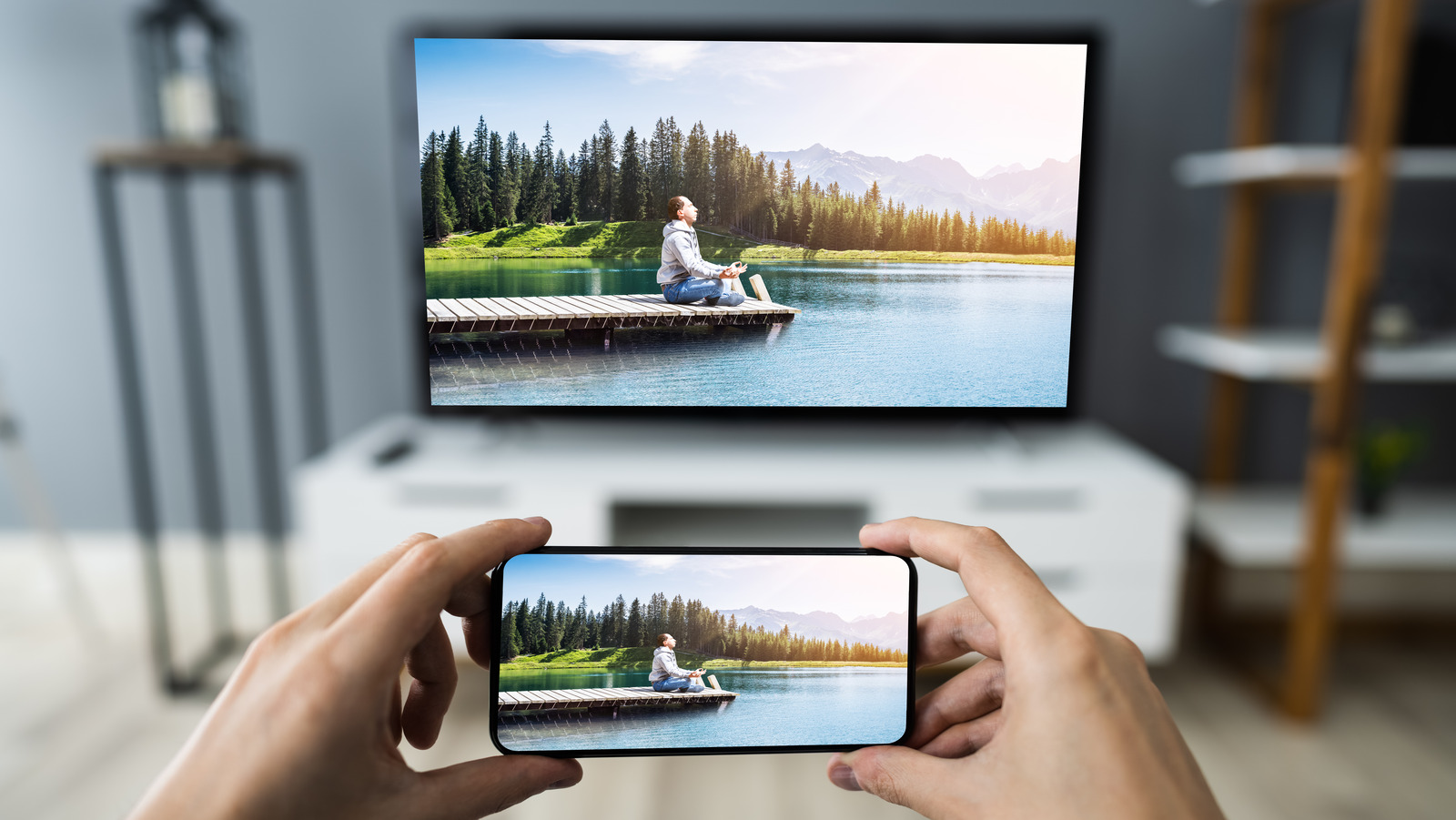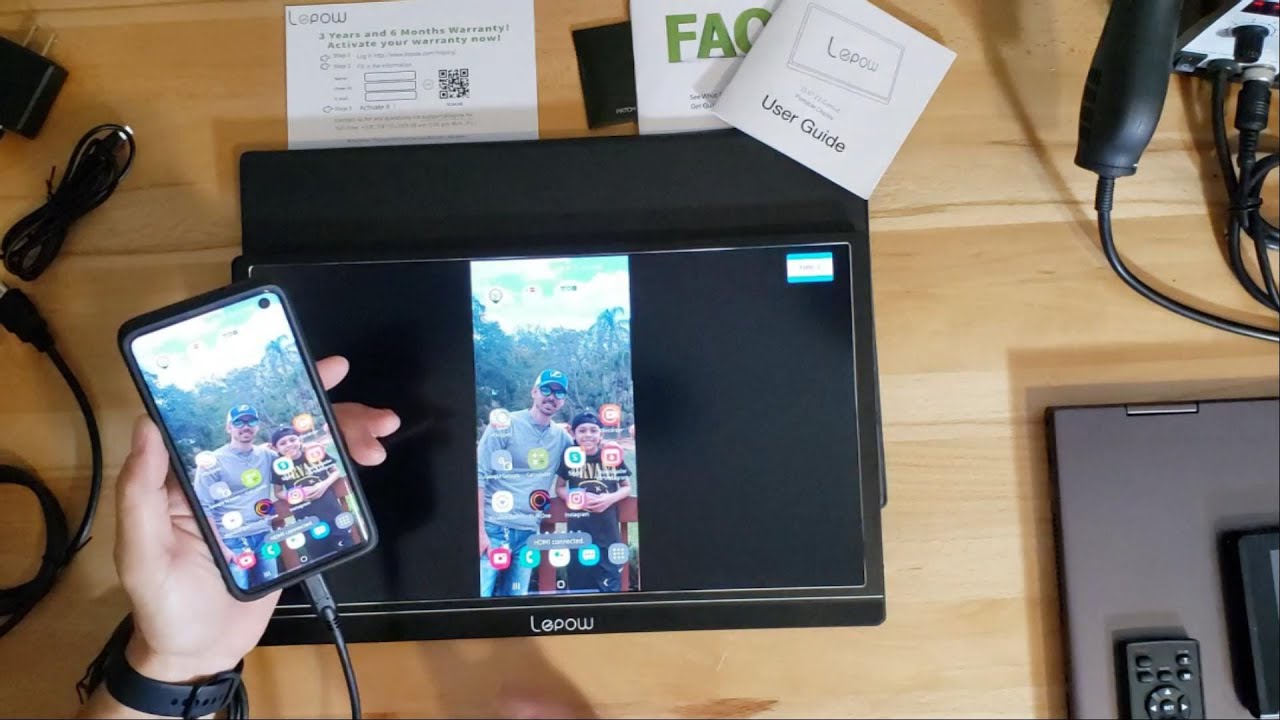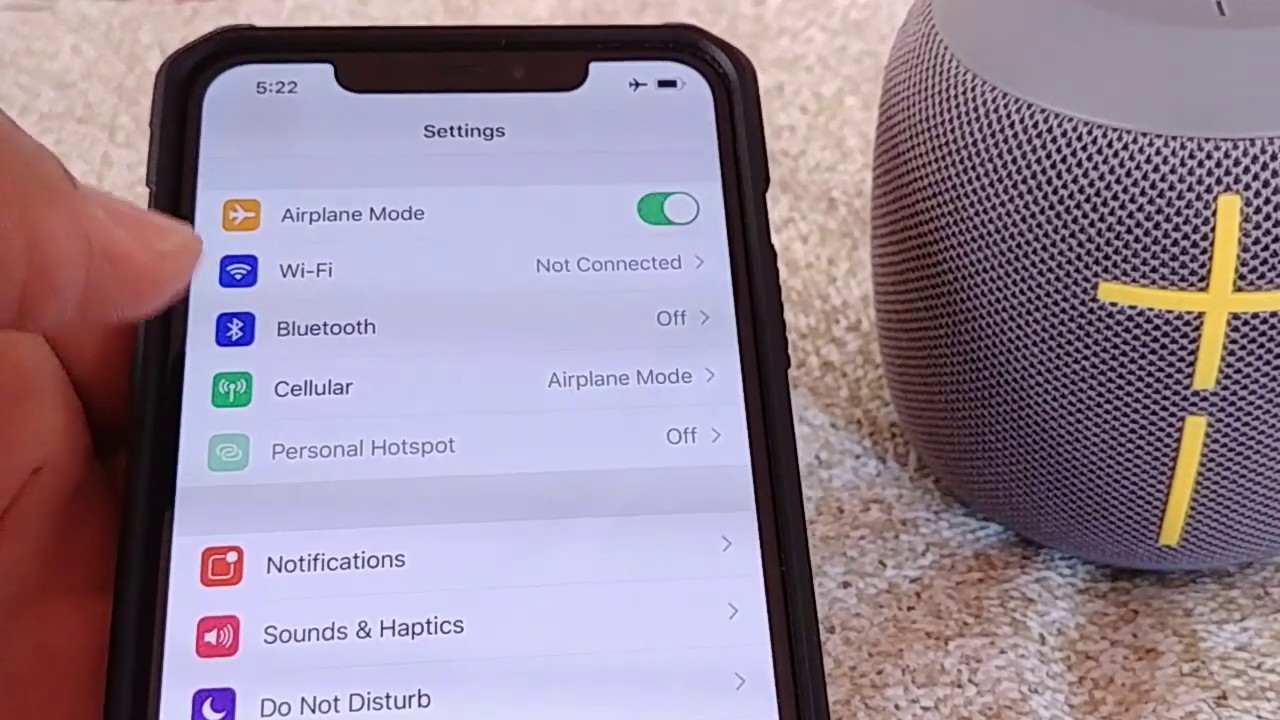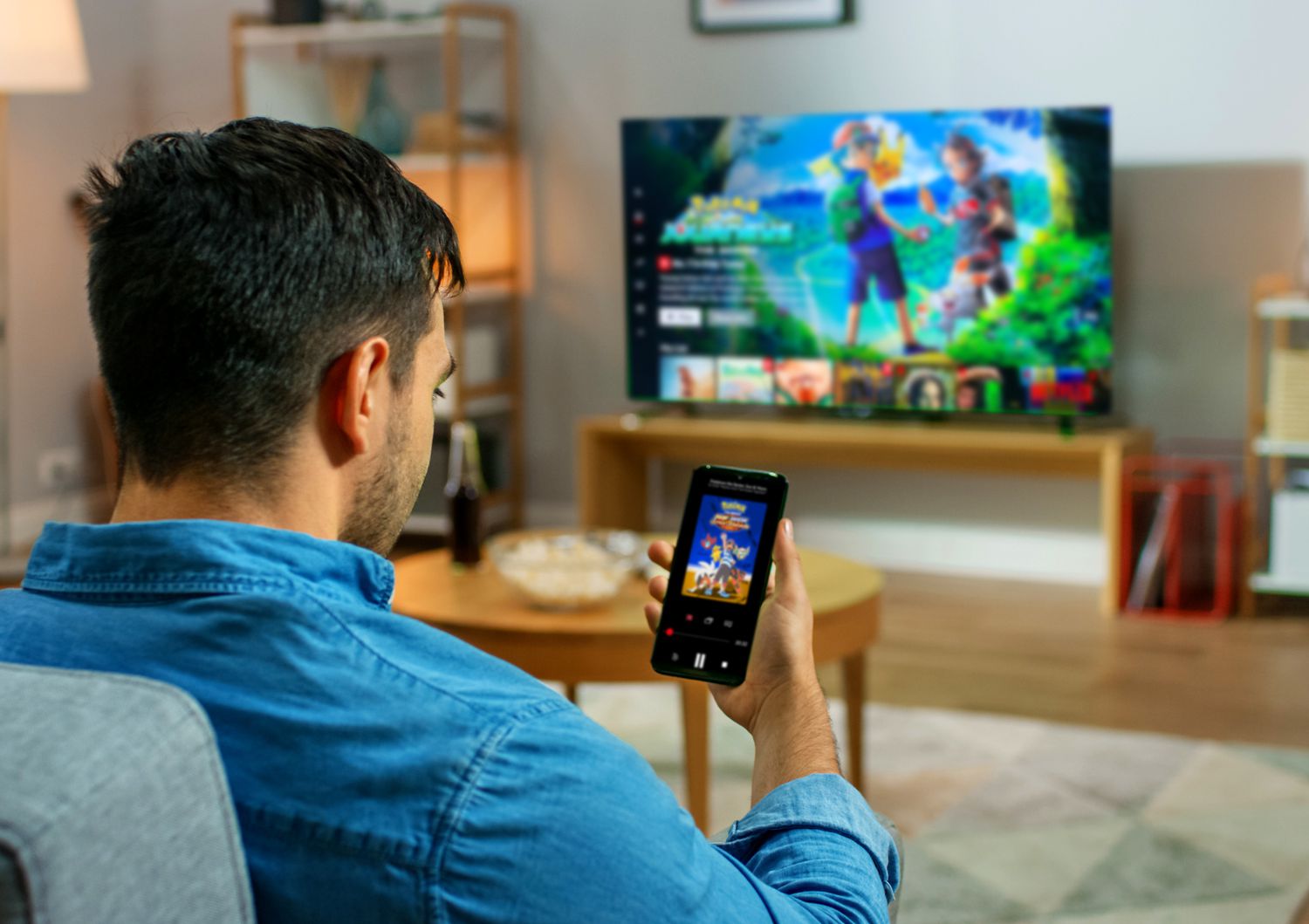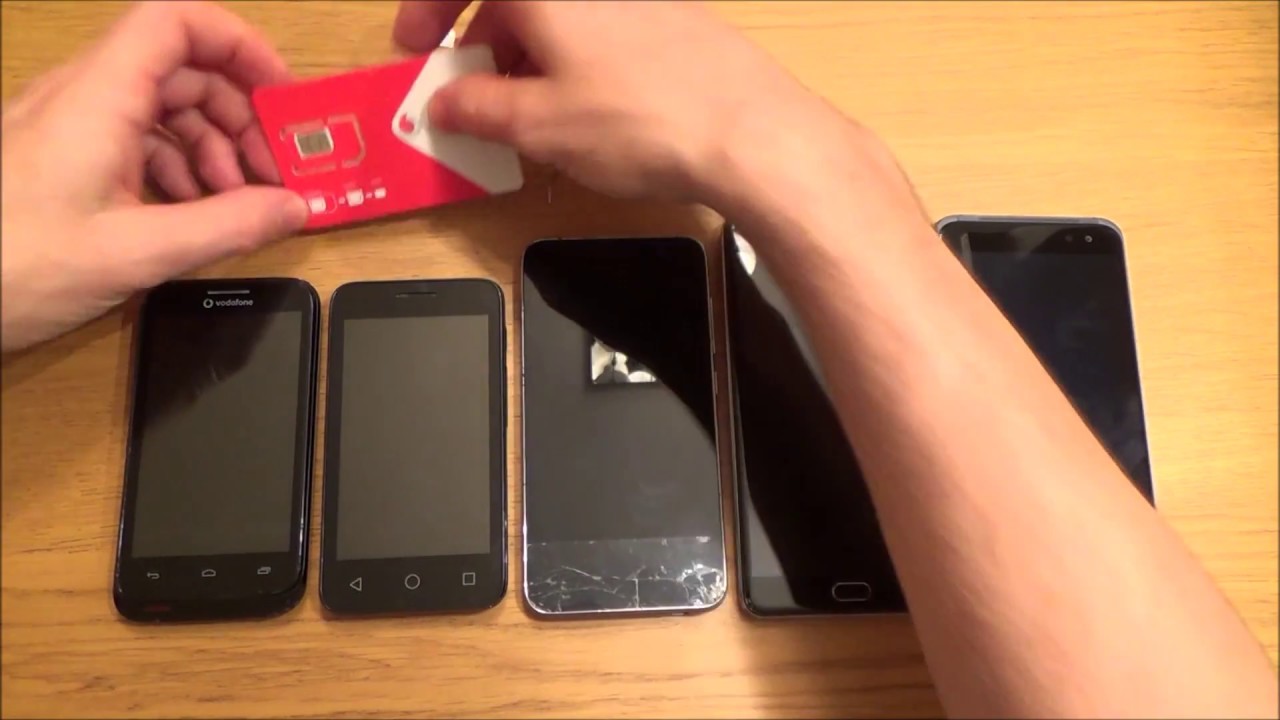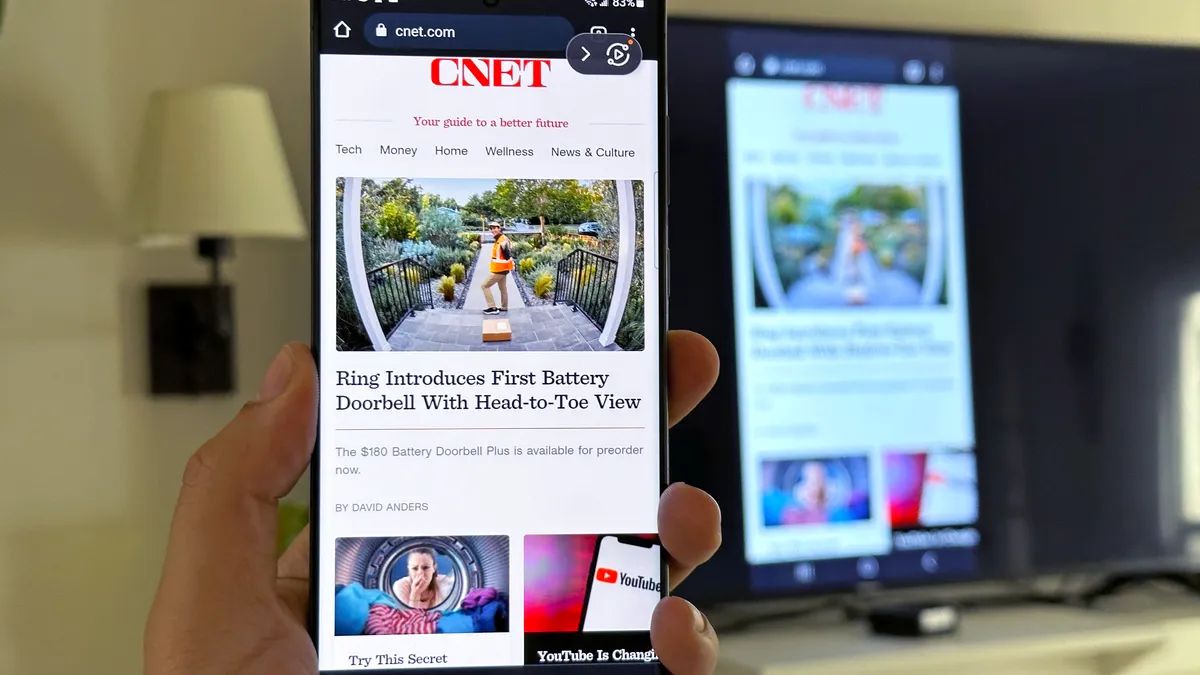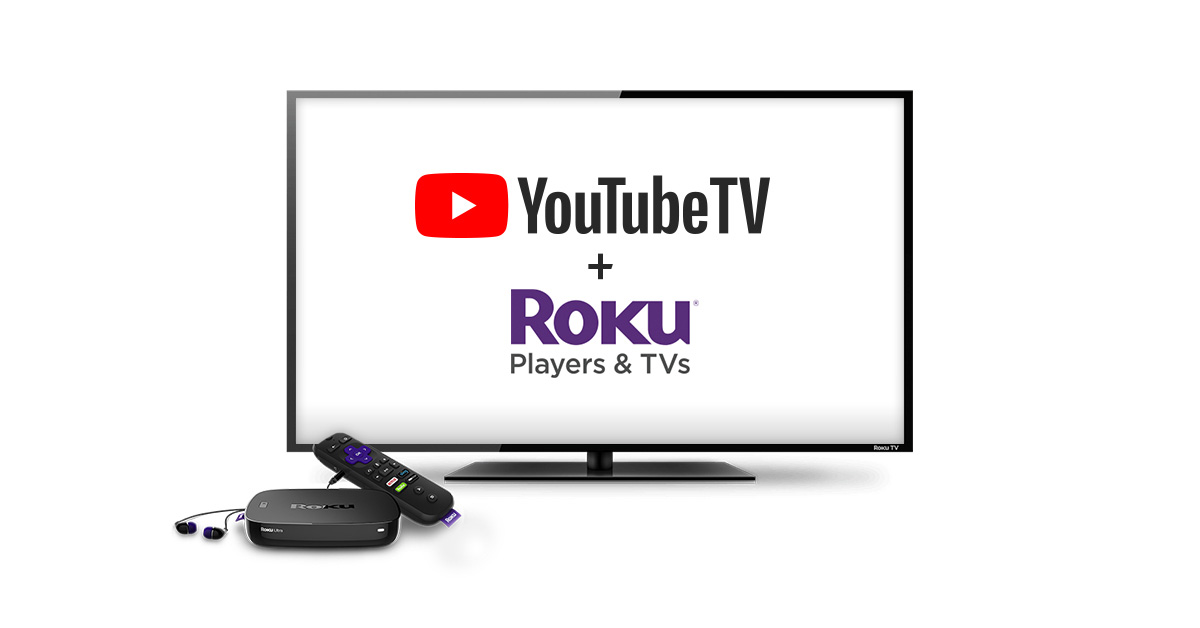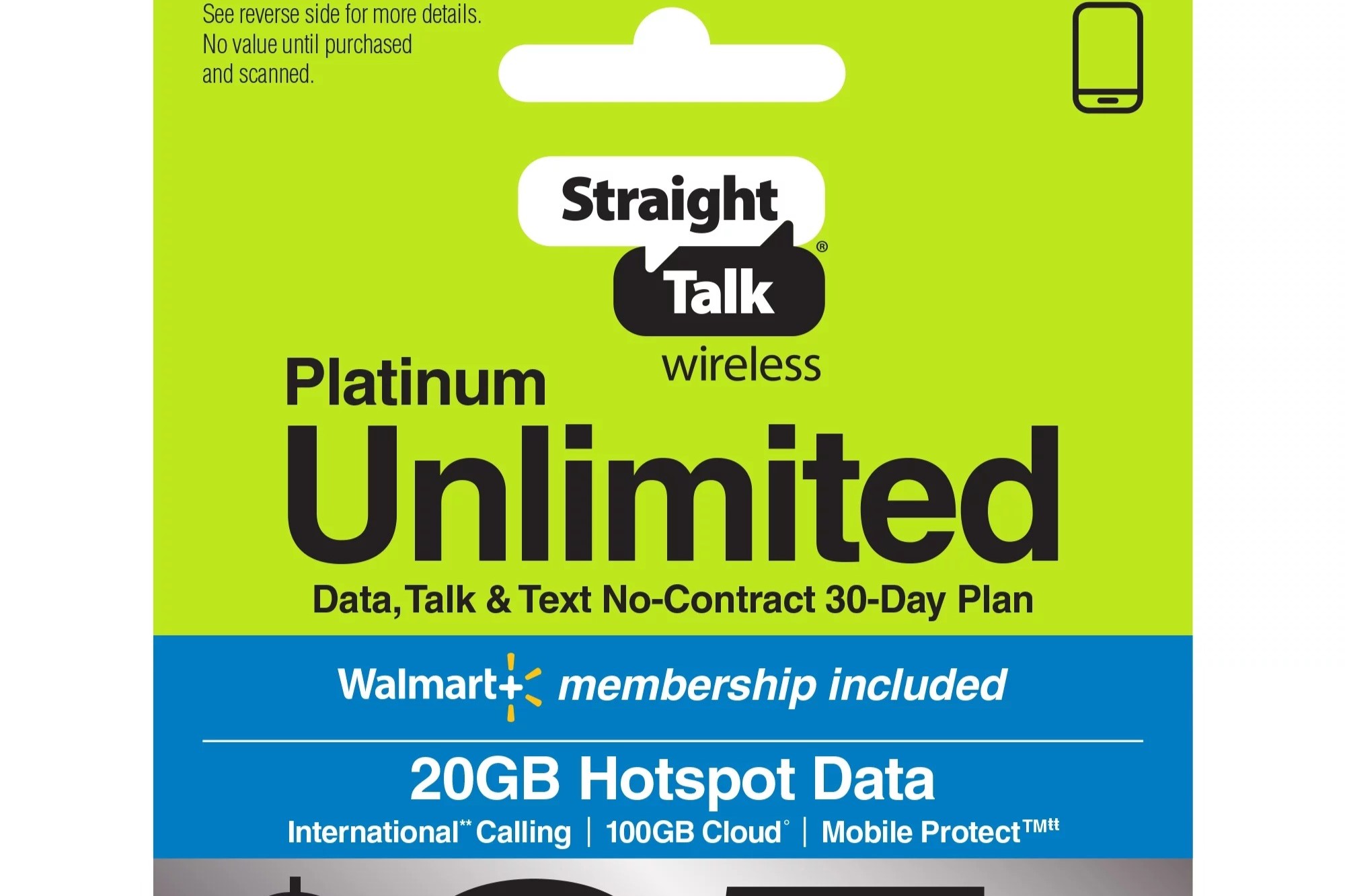Introduction
In this digital era, our smartphones have become indispensable tools, serving as our personal assistants, entertainment hubs, and communication devices. With the advancements in technology, these pocket-sized powerhouses are capable of performing a multitude of tasks, including connecting to our TVs for an immersive viewing experience. Whether you want to stream your favorite shows, share photos and videos with friends and family, or play mobile games on a larger screen, connecting your phone to your TV can unlock a world of possibilities.
As the demand for seamless connectivity continues to rise, understanding the different methods of linking your phone to your TV has become increasingly important. From traditional wired connections to cutting-edge wireless technologies, there are various options available, each with its own set of advantages and considerations. By demystifying the process of connecting your phone to your TV, you can harness the full potential of your devices and elevate your entertainment experience.
Join us as we delve into the world of smartphone-to-TV connectivity, exploring the intricacies of wired and wireless connections, setting up screen mirroring, and uncovering valuable tips for achieving a smooth and hassle-free connection. Whether you're a tech enthusiast looking to expand your digital ecosystem or a casual user seeking simple solutions, this comprehensive guide will equip you with the knowledge and insights to seamlessly bridge the gap between your phone and TV.
Let's embark on this enlightening journey, empowering you to harness the full potential of your devices and revolutionize the way you interact with your digital content. Whether you're a seasoned tech aficionado or a curious novice, this guide will unravel the complexities of connecting your phone to your TV, paving the way for a seamless and immersive multimedia experience.
Understanding the Different Methods of Connecting Your Phone to TV
When it comes to connecting your phone to your TV, there are several methods available, each offering unique features and functionalities. Understanding these diverse options will enable you to choose the most suitable approach based on your preferences, device compatibility, and desired level of convenience.
Using a Wired Connection: HDMI and MHL Cables
One of the most straightforward ways to connect your phone to your TV is through a wired connection using HDMI (High-Definition Multimedia Interface) or MHL (Mobile High-Definition Link) cables. HDMI cables are widely used for transmitting high-definition audio and video signals, providing a reliable and high-quality connection between devices. By simply connecting one end of the HDMI cable to your phone and the other end to an available HDMI port on your TV, you can mirror your phone’s screen and enjoy your favorite content on the big screen.
MHL cables, on the other hand, are specifically designed for connecting mobile devices to displays, offering seamless audio and video transmission. While MHL cables require a compatible micro-USB or USB-C port on your phone, they provide an efficient solution for users seeking a direct and dependable wired connection.
Using a Wireless Connection: Chromecast, Miracast, and AirPlay
Wireless connectivity has revolutionized the way we link our phones to our TVs, offering unparalleled convenience and flexibility. Devices such as Google Chromecast, Miracast, and Apple AirPlay empower users to effortlessly stream content from their phones to their TVs without the constraints of physical cables.
Google Chromecast, a popular choice for Android and iOS users, allows you to cast your favorite apps, games, and media from your phone to your TV with a simple tap. Miracast, a wireless display standard supported by many Android devices, enables seamless screen mirroring and content sharing on compatible TVs and monitors. For Apple users, AirPlay provides a seamless way to stream or mirror content from an iPhone, iPad, or Mac to an Apple TV or AirPlay 2-compatible smart TV.
Understanding the intricacies of these wireless technologies will empower you to leverage the benefits of wireless connectivity and seamlessly integrate your phone with your TV, enhancing your entertainment experience.
Using a Wired Connection: HDMI and MHL Cables
When it comes to establishing a direct and reliable connection between your phone and TV, utilizing a wired connection through HDMI (High-Definition Multimedia Interface) or MHL (Mobile High-Definition Link) cables offers a straightforward and efficient solution. These cables serve as the bridge between your mobile device and your TV, enabling seamless transmission of audio and video signals for an immersive viewing experience.
HDMI Cables:
HDMI cables have become ubiquitous in the realm of home entertainment, providing a standardized interface for transmitting high-definition audio and video signals between devices. These cables are equipped with HDMI connectors on both ends, allowing you to effortlessly link your phone to your TV’s HDMI port. Whether you’re streaming movies, sharing photos and videos, or playing mobile games, HDMI cables offer a reliable and high-quality connection, delivering crisp visuals and immersive sound directly to your TV.
Setting up your phone with an HDMI cable involves a simple process: connect one end of the HDMI cable to your phone using a compatible adapter or cable, and plug the other end into an available HDMI port on your TV. Once connected, your TV will mirror your phone’s screen, allowing you to enjoy your favorite content on a larger display with minimal latency and maximum fidelity.
MHL Cables:
MHL cables are specifically designed for connecting mobile devices to external displays, offering seamless audio and video transmission through a single cable. These cables are compatible with devices featuring MHL-enabled micro-USB or USB-C ports, providing a direct and efficient means of linking your phone to your TV without compromising on audiovisual quality.
By connecting your phone to your TV using an MHL cable, you can experience the convenience of a wired connection while leveraging the capabilities of your mobile device. Whether you’re showcasing presentations, streaming multimedia content, or engaging in video calls, MHL cables enable you to harness the full potential of your phone on a larger screen, enriching your viewing and interactive experiences.
Understanding the benefits of utilizing HDMI and MHL cables for connecting your phone to your TV will empower you to make informed decisions based on your specific device compatibility and connectivity preferences, ensuring a seamless and immersive multimedia experience.
Using a Wireless Connection: Chromecast, Miracast, and AirPlay
Wireless connectivity has transformed the way we interact with our devices, offering unparalleled convenience and flexibility when it comes to linking our phones to our TVs. With the advent of wireless technologies such as Google Chromecast, Miracast, and Apple AirPlay, users can seamlessly stream and mirror content from their phones to their TVs, eliminating the need for physical cables and expanding their entertainment possibilities.
Google Chromecast:
Google Chromecast has emerged as a popular choice for users seeking a wireless solution to connect their phones to their TVs. This versatile device allows you to cast a wide array of content, including apps, games, and multimedia, from your phone to your TV with a simple tap. By plugging the Chromecast into your TV’s HDMI port and connecting it to your Wi-Fi network, you can effortlessly stream your favorite content, control playback from your phone, and enjoy a seamless viewing experience.
Miracast:
Miracast, a wireless display standard supported by many Android devices, offers a convenient way to mirror your phone’s screen on compatible TVs and monitors. By leveraging Miracast technology, users can wirelessly transmit audio, video, and other multimedia content from their phones to larger displays, creating a dynamic and immersive viewing environment. Whether you’re showcasing presentations, sharing photos and videos, or engaging in video conferencing, Miracast provides a seamless and efficient wireless connection between your phone and TV.
Apple AirPlay:
For Apple users, AirPlay serves as a seamless solution for streaming and mirroring content from an iPhone, iPad, or Mac to an Apple TV or AirPlay 2-compatible smart TV. With AirPlay, you can effortlessly share your favorite movies, music, and photos on the big screen, creating a captivating entertainment experience. Whether you’re enjoying a family movie night, sharing vacation memories, or immersing yourself in your favorite tunes, AirPlay offers a user-friendly and intuitive way to integrate your Apple devices with your TV.
Understanding the capabilities and advantages of these wireless technologies will empower you to seamlessly integrate your phone with your TV, unlocking a world of entertainment possibilities without the constraints of physical cables. Whether you’re a tech enthusiast, a casual user, or a multimedia aficionado, wireless connectivity offers a hassle-free and immersive way to enjoy your digital content on a larger screen.
Setting Up and Using Screen Mirroring
Screen mirroring, also known as screen casting or display mirroring, allows you to replicate the contents of your phone’s screen on a larger display, such as a TV or monitor. This feature is particularly useful for sharing photos and videos, playing mobile games, giving presentations, and enjoying multimedia content from your phone on a more expansive canvas. Understanding how to set up and utilize screen mirroring effectively will enhance your overall viewing experience and enable seamless content sharing with friends and family.
Enabling Screen Mirroring:
Depending on your device and TV model, the process of enabling screen mirroring may vary. For many Android devices, screen mirroring can be accessed through the “Cast” or “Smart View” feature in the settings menu. Similarly, Apple devices offer AirPlay for wirelessly mirroring the screen to compatible TVs and devices. By accessing the screen mirroring settings on your phone and selecting the desired display device, you can establish a direct connection and begin mirroring your screen in real time.
Benefits of Screen Mirroring:
Screen mirroring offers a myriad of benefits, allowing you to seamlessly share your phone’s screen with a larger audience and enjoy an immersive viewing experience. Whether you’re showcasing vacation photos, conducting a business presentation, or streaming your favorite content, screen mirroring provides a dynamic and versatile platform for content sharing and collaboration. Additionally, the ability to mirror your phone’s screen wirelessly eliminates the constraints of physical cables, providing greater flexibility and mobility during presentations and entertainment activities.
Optimizing Screen Mirroring Performance:
To ensure a smooth and seamless screen mirroring experience, optimizing the performance of your wireless connection and minimizing potential interference is essential. Positioning your phone and TV within close proximity to the Wi-Fi router, reducing signal obstructions, and minimizing network congestion can contribute to a stable and reliable screen mirroring experience. Additionally, keeping your devices updated with the latest firmware and software updates can enhance compatibility and performance, ensuring an uninterrupted and enjoyable screen mirroring session.
By familiarizing yourself with the process of setting up and utilizing screen mirroring, you can harness the full potential of your devices and elevate your content sharing and viewing experiences. Whether you’re engaging in professional presentations, enjoying multimedia content, or collaborating with others, screen mirroring offers a versatile and intuitive solution for seamlessly connecting your phone to your TV.
Tips for a Smooth and Hassle-Free Connection
Ensuring a seamless and hassle-free connection between your phone and TV is essential for maximizing your entertainment experience and avoiding potential technical challenges. By incorporating the following tips and best practices, you can optimize the connectivity process and enjoy a smooth and uninterrupted transition from your phone to the big screen.
- Check Device Compatibility: Before attempting to connect your phone to your TV, verify the compatibility of your devices with the selected connection method. Ensure that your phone and TV support the chosen wired or wireless connectivity standard to avoid compatibility issues and optimize performance.
- Update Firmware and Software: Keeping your phone, TV, and any intermediary devices such as Chromecast or Apple TV updated with the latest firmware and software versions is crucial for maintaining compatibility and resolving potential connectivity issues. Regular updates can address performance enhancements and bug fixes, contributing to a smoother connection process.
- Optimize Wi-Fi Signal Strength: When utilizing wireless connectivity methods such as screen mirroring or streaming, optimizing your Wi-Fi signal strength is paramount. Position your router strategically, minimize signal obstructions, and consider using Wi-Fi extenders or mesh networks to ensure a robust and stable wireless connection.
- Use High-Quality Cables and Adapters: If opting for a wired connection using HDMI or MHL cables, invest in high-quality cables and adapters to maintain signal integrity and minimize potential signal loss. Selecting reputable and certified cables can significantly enhance the reliability of your wired connection.
- Explore Dedicated Apps and Features: Many smartphones and smart TVs offer dedicated apps and features designed to streamline the connectivity process. Explore the available apps and built-in functionalities on your devices to leverage specialized connection methods and optimize the user experience.
- Positioning and Environment: Consider the positioning of your devices and the environment in which they are located. Minimize interference from other electronic devices, maintain an unobstructed line of sight between your phone and TV, and ensure adequate ventilation to prevent overheating during extended usage.
- Secure Your Network: When utilizing wireless connectivity, prioritize network security by implementing strong encryption, utilizing secure Wi-Fi passwords, and enabling network authentication. Protecting your network can safeguard against unauthorized access and ensure a secure and reliable connection.
- Test and Troubleshoot: Before engaging in a critical presentation or entertainment session, conduct a preliminary test of the connection to identify and address any potential issues. Familiarize yourself with troubleshooting methods specific to your chosen connection method to swiftly resolve common connectivity challenges.
By implementing these tips and best practices, you can navigate the process of connecting your phone to your TV with confidence and precision, mitigating potential obstacles and optimizing the overall connectivity experience. Whether you’re engaging in professional presentations, enjoying multimedia content, or simply seeking a seamless entertainment experience, a smooth and hassle-free connection is the cornerstone of a truly immersive viewing experience.
Conclusion
As we conclude our exploration of connecting your phone to your TV, it’s evident that the seamless integration of these devices has revolutionized the way we consume and share digital content. Whether through the convenience of wireless technologies or the reliability of wired connections, the ability to bridge the gap between our phones and TVs has unlocked a world of entertainment possibilities.
By understanding the diverse methods of connecting your phone to your TV, including HDMI and MHL cables for wired connections, as well as wireless solutions such as Google Chromecast, Miracast, and Apple AirPlay, you can tailor your approach to suit your preferences and device compatibility. Additionally, delving into the intricacies of screen mirroring and embracing valuable tips for a smooth and hassle-free connection empowers you to overcome technical challenges and optimize your viewing experience.
As technology continues to evolve, the synergy between our phones and TVs will undoubtedly become more seamless and intuitive, enhancing our ability to share, collaborate, and immerse ourselves in a diverse range of digital content. Whether for entertainment, productivity, or communication, the harmonious connectivity between these devices enriches our daily lives and empowers us to interact with our digital ecosystem in meaningful and impactful ways.
As you embark on your journey of connecting your phone to your TV, may the insights and tips shared in this guide serve as valuable resources, equipping you with the knowledge and confidence to navigate the complexities of device connectivity. Embrace the versatility and potential of your devices, and revel in the boundless opportunities for shared experiences, enhanced entertainment, and seamless collaboration that await you.
With a deepened understanding of the methods, technologies, and best practices for connecting your phone to your TV, you are poised to embark on a transformative and enriching digital journey, where the boundaries between your devices fade away, and the immersive world of multimedia content unfolds before you in all its splendor.







